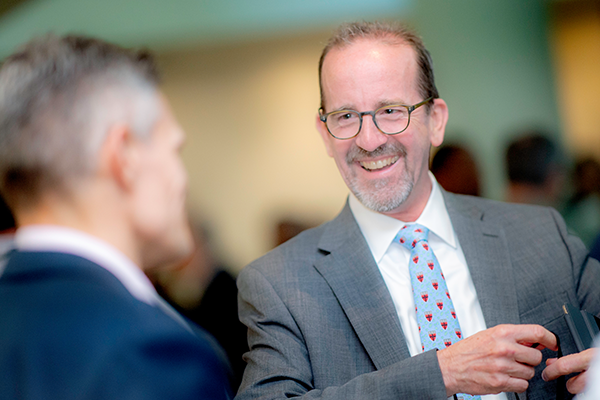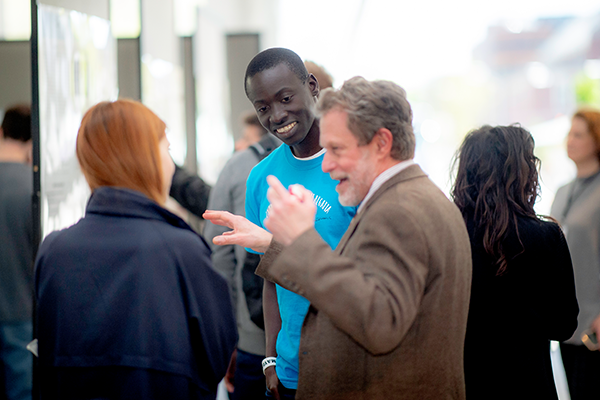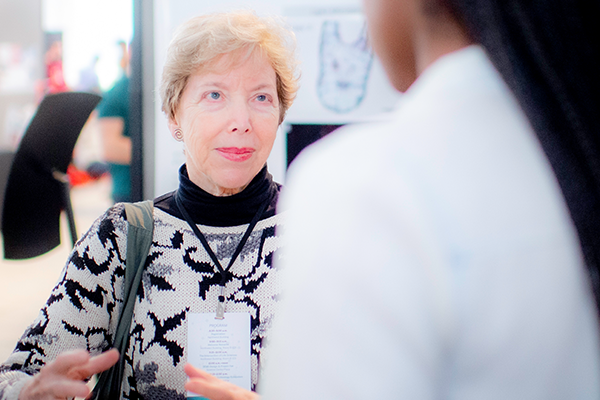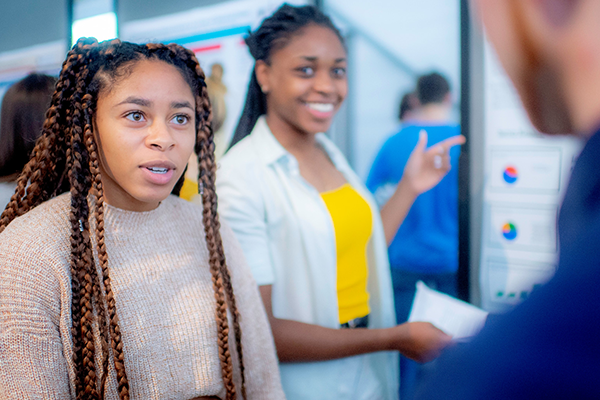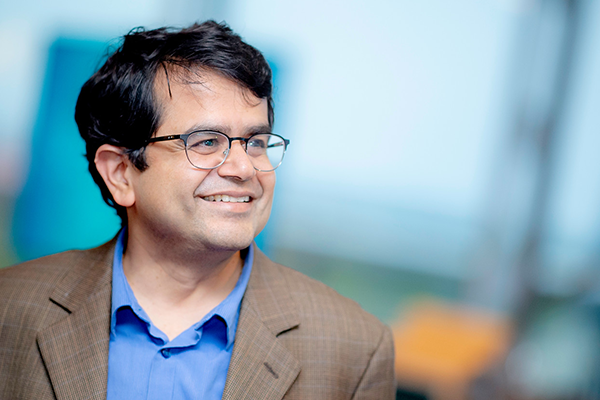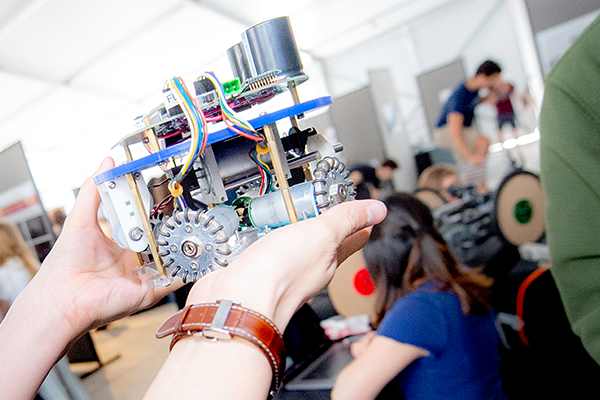Soft, wearable robots to help people move. AI to provide better information for health care. Cancer-killing vaccines to bolster immunity from inside the body. Mathematical models to predict and disrupt the self-assembly process of HIV and other viruses.
A preview into the next generation of life sciences innovation drew alumni, faculty, students, and industry partners to Cambridge for SEAS Nexus. The inaugural showcase, held on May 8 and sponsored by the Harvard John A. Paulson School of Engineering and Applied Sciences (SEAS), highlighted the ways faculty and students are transforming our understanding of life and how we treat disease.
“SEAS faculty across all areas touch life sciences research,” said Frank Doyle, John A. Paulson Dean. “They’re known for translating technologies from the lab to the real world.”
Lifechanging Designs and Discoveries
The day opened with a snapshot of the compelling biological challenges Harvard faculty take on every day at SEAS. In lightning talks, faculty shared their latest advances and linked breakthroughs to SEAS’s culture of interdisciplinary collaboration, a talented community of undergraduate and graduate students, and thriving partnerships across Greater Boston’s rich life sciences ecosystem.
“At Harvard, we have the expertise in all the areas that we need,” said Vinothan Manoharan, Wagner Family Professor of Chemical Engineering and professor of physics, who helped launch the new Quantitative Biology Initiative that brings together engineering, mathematics, and biology researchers.

Innovative Research Communities
“I don’t think our work would be possible without easy access to expert resources,” said Finale Doshi-Velez, assistant professor of computer science. She regularly reaches out to statistics colleagues, Law School policy experts, and the hospitals in her research on how machine learning, computational statistics, and data science can improve decision making in health care. Harvard students also have unparalleled opportunities to test-drive their research in real-world medicine.
“Not only are they doing research in the lab and building models and simulations, they are coming over to the hospital, they’re meeting with a doctor and getting feedback, and they’re working directly with patients. That brings a completely different flavor to a PhD research experience,” offered Conor Walsh, Gordon McKay Professor of Engineering and Applied Sciences.
Entrepreneurial undergraduate and graduate students are essential in helping bring research to market. PhD students were instrumental partners in developing a therapeutic cancer vaccine from preclinical trials to licensing stages for David Mooney, Robert P. Pinkas Family Professor of Bioengineering, and his lab.
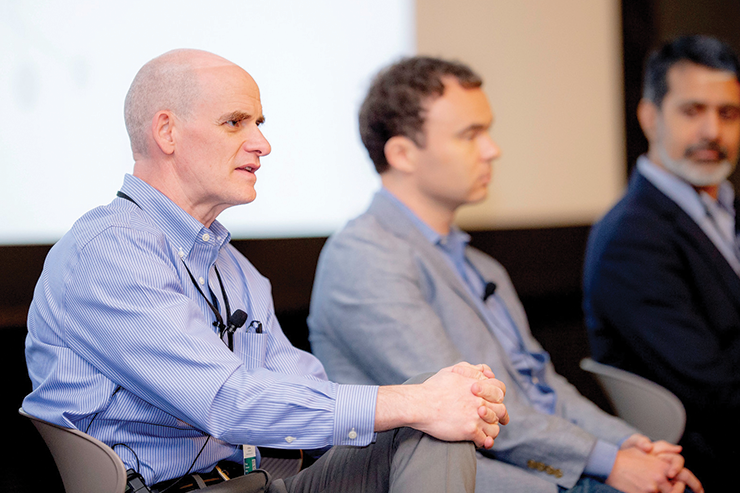
Hands-On Experience
Learning by doing is a cornerstone of SEAS. “Students realize that if they really want to have an impact, it can’t just end with publishing a paper. They have to get engaged, get involved in the technology, and help it get out into the world,” said Mooney.
Attendees saw this in action with the numerous technology and innovation projects created by students at the annual SEAS Design & Project Fair. Creators proudly displayed robots in battle, video games based on player mood, T-shirts measuring real-time pollution data, and a live action PAC-MAN.
“I like seeing the very direct way we can take what we learn in the classroom and connect it to real life,” said Allison Lee ’20, who worked on a team to create a small-scale autonomous robot like that used in warehouse automation for Amazon. A computer science concentrator, Lee praised her experience at SEAS, which encourages her not only to reimagine possibilities but also to carefully weigh the human impact of technological advances. “We look at the ethical implications of what we invent. It’s made me think more critically about what is truly helpful in the world.”
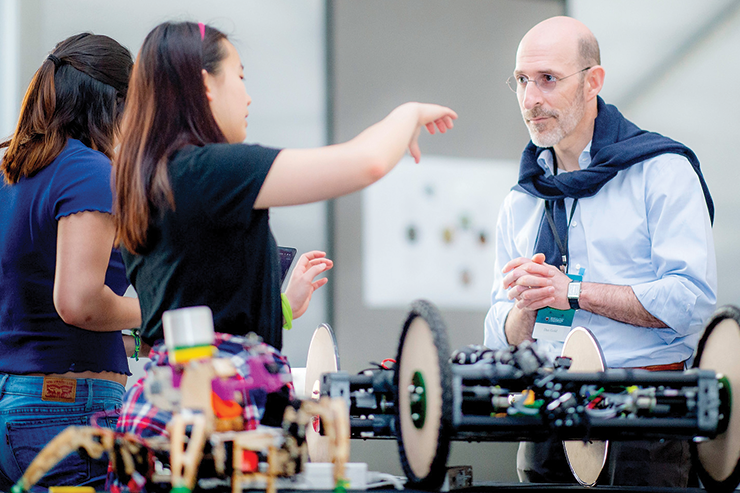
Next Revolution of Problem-Solvers
What kind of innovations could change our future lives? Maybe it will be smart toilet paper that tracks gut microbiomes. Or kidney organoids that can bridge dire shortages in organ donors. Or engineered fibers that help regenerate skin and protect it in combat.
These were some of the bioengineering and health tech research that SEAS graduate students shared. Their creativity, curiosity, and ambitions are driving the next wave of collaboration among SEAS, Harvard’s professional schools, startups, academic medical centers, and government agencies.

Collaborating and Connecting
The importance of convergence was the takeaway from a panel on the health technology ecosystem moderated by Travis McCready, president and CEO of the Massachusetts Life Sciences Center. Dean Doyle, Harvard University Provost Alan Garber, Harvard Medical School Professor and Chair of Systems Biology Galit Lahav, and Harvard Business School Dean Nitin Nohria all agreed: tackling complex health problems over the next decade will require broad collaboration to unlock discoveries and bring them into practice.
Harvard’s Science and Engineering Complex, opening in 2020, will help to further expand the footprint for life sciences partnerships, with more than 500,000 square feet of new lab space, state-of-the-art classrooms, maker spaces, and active learning labs.

Entrepreneurial SEAS
When Alex Bangs ’88 was a student, he happened to pass a small flyer on a robotics lab. Had he not seen it, he never would have ended up getting a summer job in the lab or using that experience as a springboard for his senior thesis. Times have changed, he noted, and he made a point of traveling from Silicon Valley to attend SEAS Nexus. “I love seeing how SEAS is celebrating engineering and making it cool,” said Bangs, who is CIO of Vir Biotechnology. “I’m thrilled about the multidisciplinary approach—it’s great to see SEAS being built that way.”
Patrick Purdon ’96, an engineering concentrator who now develops neurotechnology to study anesthesia, aging, and brain development at Massachusetts General Hospital and Harvard Medical School, agreed. “I came back to see how SEAS is growing and changing,” he said. “It is so impressive to see how the School embraces engineering in partnership with the liberal arts and brings together faculty and students who are making a real-world impact on health care technology and innovation.”
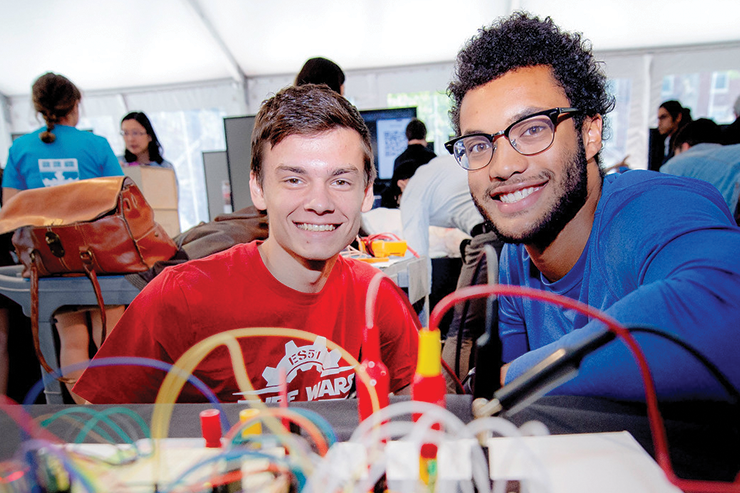
Stay up to date on the latest news by following SEAS on Facebook, Instagram, and Twitter.
